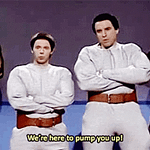These two roles are at the heart of any Scrum team, but they can sometimes feel like two boxers in the ring, duking it out over priorities, timelines, and deliverables. So, who does what? How do these roles complement each other, and what happens when they clash? By the end of this episode, you’ll not only understand the distinct responsibilities of these roles but also learn how you can apply their principles to your own life.
Let’s start with the Product Owner, or as I like to call them, the visionary compass of the Scrum team. The Product Owner is responsible for setting the what—what needs to be built, what adds value to the customer, and what the priorities are.
Think of the Product Owner as the team’s North Star. They’re not in the weeds, doing the actual development work, but they’re making sure the team is heading in the right direction. Their primary responsibilities include: Owning and managing the Product Backlog. This is the to-do list of all the features, fixes, and improvements the team needs to tackle. Prioritizing tasks based on business value. Not everything can be done at once, and the Product Owner decides what’s most important. Acting as the voice of the customer. They’re the bridge between the team and the stakeholders, ensuring that the team delivers what the customer truly needs.
A great Product Owner is decisive, organized, and empathetic. They have to balance the competing demands of stakeholders, customers, and the team, all while keeping their eye on the bigger picture. It’s not an easy job, but when done right, it’s what ensures the team delivers the maximum value with every sprint.
Now let’s talk about the Scrum Master, who I like to think of as the coach and protector of the team. While the Product Owner is focused on what needs to be done, the Scrum Master is all about how the team gets it done.
The Scrum Master’s responsibilities include:
Facilitating Scrum ceremonies, like sprint planning, daily stand-ups, and retrospectives. These ceremonies keep the team aligned and productive.
They also remove roadblocks. If the team is stuck because they don’t have the right tools, information, or approvals, the Scrum Master steps in to clear the path.
They’re also responsible for Coaching the team on Agile principles. They ensure that the team sticks to Scrum practices and helps them continuously improve.
A great Scrum Master is patient, resourceful, and a natural problem-solver. They don’t micromanage or tell the team what to do—instead, they empower the team to solve problems themselves while providing support where it’s needed. They’re like a referee, keeping the game fair and making sure everyone plays by the rules.
Now, here’s where the magic happens: when the Product Owner and Scrum Master work together seamlessly, they create a powerhouse dynamic. The Product Owner sets the vision and priorities, while the Scrum Master ensures the team has the environment and tools to execute that vision effectively.
Think of them as the dynamic duo of Scrum. The Product Owner is like a chef deciding what dishes will be on the menu, while the Scrum Master is the kitchen manager, making sure the kitchen runs smoothly so the dishes can be served on time. They’re both essential, but they focus on very different aspects of the process.
When these roles are aligned, the team thrives. But let’s be honest—conflicts can and do happen. What if the Product Owner wants to add more to the sprint than the team can handle? Or what if the Scrum Master feels the team is being pulled in too many directions? These moments of tension are inevitable, but they can be resolved with clear communication and a shared commitment to the team’s success.
What makes a great Product Owner or Scrum Master? While their roles are distinct, they share some common traits that set the best apart from the rest.
For Product Owners: Visionary Thinking: They need to see the big picture and understand how each task contributes to the overall goal. Decision-Making Skills: Prioritizing a backlog isn’t easy, especially when stakeholders have conflicting demands.
For Scrum Masters, some key skills are empathy and patience: They’re the team’s biggest advocate, and they need to navigate challenges without losing their cool. Facilitation Skills: Whether it’s leading a stand-up or resolving conflicts, great Scrum Masters know how to bring people together.
Both roles require strong communication skills and a commitment to fostering collaboration within the team.
Now, let’s bring it back to you. Even if you’re not part of a Scrum team, you can apply the principles of these roles to your own personal goals. Here’s how it works:
Be Your Own Product Owner: Take ownership of your “backlog.” This means listing out everything you want to accomplish and prioritizing those tasks based on what’s most important. Think of your backlog as a map of everything that needs to happen to reach your goal.
For example, let’s say you’re planning a wedding—a personal project that often feels like it could use its own Scrum team. Your backlog might include tasks like choosing a venue, finalizing the guest list, ordering invitations, and meeting with vendors. As the Product Owner, your job is to prioritize what comes first. Maybe booking the venue is the top priority because it sets the date, which then dictates when everything else happens.
By organizing and prioritizing tasks in your backlog, you ensure that you’re tackling the most critical items first, instead of spinning your wheels on less important things like cake flavors or centerpiece arrangements (no matter how tempting they are).
Be Your Own Scrum Master: Once you’ve outlined and prioritized your tasks, it’s time to channel your inner Scrum Master. Your role here is to create an environment that supports success and remove any roadblocks that could slow you down.
In the wedding example, this might mean addressing logistical challenges. If you’re stuck waiting for RSVPs before finalizing seating arrangements, what can you do to speed that process up? Maybe you send friendly reminders or use a wedding website to make RSVPs easier for your guests. The Scrum Master in you identifies what’s blocking progress and finds solutions to keep things moving.
You can also use Scrum ceremonies like sprints to keep the planning manageable. For instance, dedicate one sprint (say, two weeks) to focusing solely on finalizing the venue and vendors. Once that sprint is complete, move on to the next one, like designing invitations or arranging travel for out-of-town guests.
And don’t forget the power of a retrospective. After each sprint, reflect on what went well and what could have been smoother. If you find that vendor communications were slow, make a note to schedule follow-ups earlier in the next sprint.
By embracing the roles of Product Owner and Scrum Master, you can manage a complex project like planning a wedding with more clarity and less stress. You’ll know exactly what needs to be done and have a clear process to tackle it step by step. Plus, you’re creating room for flexibility—because, let’s face it, there’s always something unexpected in wedding planning, whether it’s a last-minute change in the guest list or a florist who decides peonies are “so last season.”
So there you have it—the Product Owner and Scrum Master, two sides of the same coin, working together to drive team success. Whether you’re part of a Scrum team or tackling personal projects, understanding these roles can help you bring structure, clarity, and collaboration to whatever you’re working on.
Thanks for tuning in to The Kaizen Project! If you enjoyed today’s episode, be sure to subscribe, leave a review, and share it with someone who could use a little Scrum in their life. And if you’ve got questions or topics you’d like me to cover in future episodes, let me know! Until next time, keep improving, keep collaborating, and stay focused on your goals.












Share this post